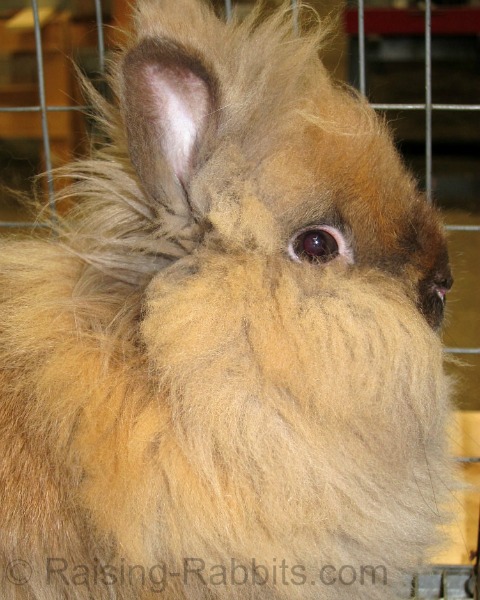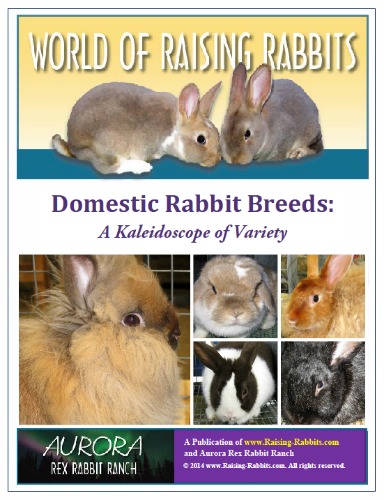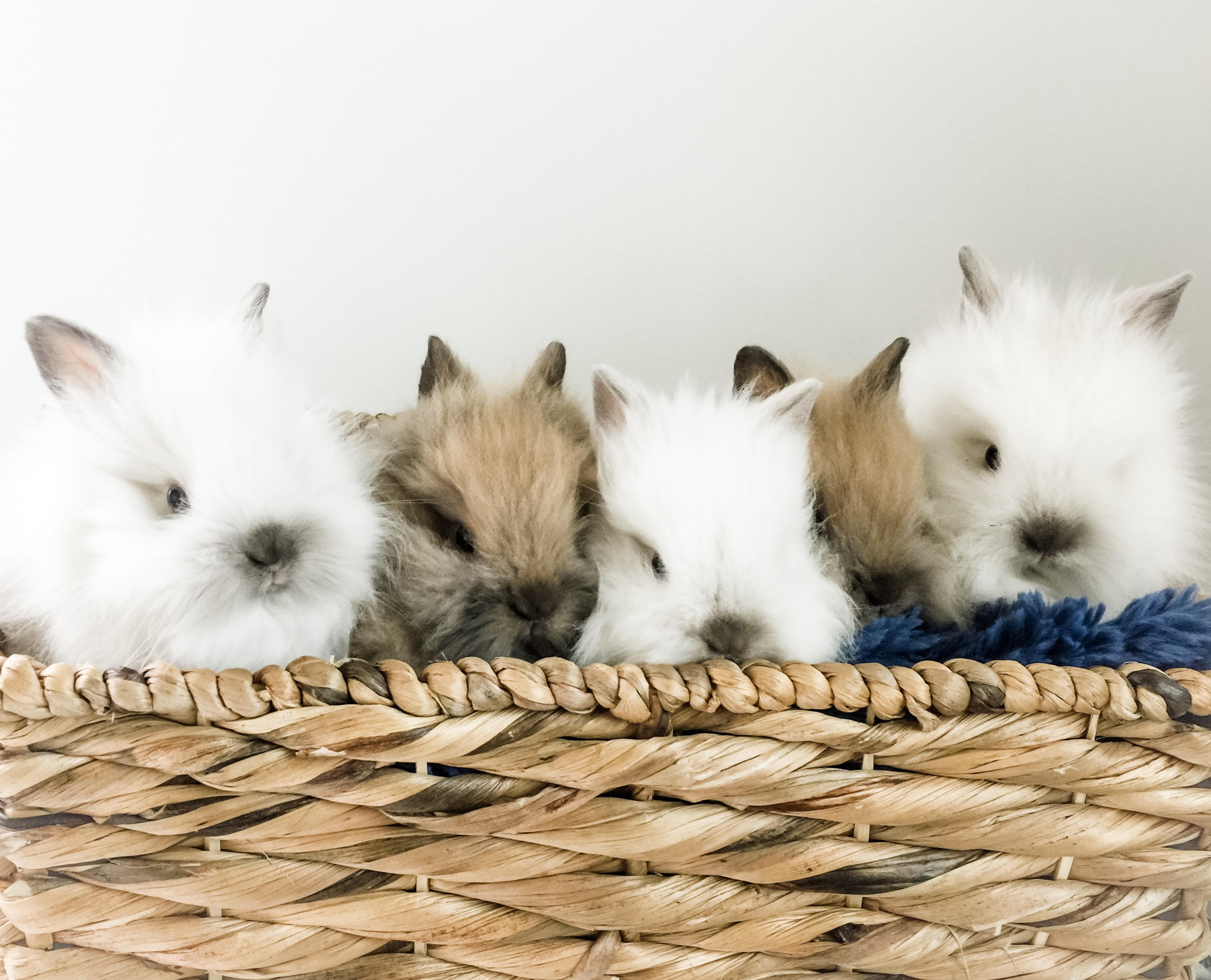Lionhead Rabbits
Lionhead Rabbits. History of the Lionhead bunny breed in Europe and the USA, plus descriptions, photos, and standards.
History of Lionhead Rabbits
The Lionhead rabbit is the result of a dominant mutation in Belgian rabbits (not angoras). It is the first significant mutation since the recessive satin fur mutation in 1934.
The exact trail of their development has been lost, however rabbits with "beards" were present in France in the mid-1960's. Ms. Meg Brown, renowned rabbit expert of Scotland, reported that these "bearded rabbits" closely resembled today's lionheads.
Belgian breeder Mr. Ronny de Clerq began breeding Lionheads in 1970. Through in-breeding and cross-breeding, he is credited with stabilizing and enhancing the breed as it is known today. At first weighing 3 kg (6.6 pounds) or so, he crossed his Lionhead bunnies with smaller dwarf breeds. This reduced the size of the breed, and it also introduced multiple color genes into the gene pool.
Lionheads in the UK
 The Lionhead is a fairly short-furred little rabbit, with the exception of a mane of long wool around the face, neck, and possibly low on the flanks. They do look like little lions.
The Lionhead is a fairly short-furred little rabbit, with the exception of a mane of long wool around the face, neck, and possibly low on the flanks. They do look like little lions.In the UK Lionheads are accepted in many colors, and may weigh no more than 1.7 kg (3.75 pounds). UK and US standards are very similar.
Also in the UK, a Lionhead with lopped ears has been created by adding Dwarf Lop (called Holland Lops in the US) genes to create this new breed. The lopped Lionhead is called the Miniature Lion Lop. It should weigh no more than 1.6 kg (3.5 pounds).
Lionheads in the USA
Lionhead imports first arrived in the USA in 2000.
A year later, in 2001, the North American Lionhead Rabbit Club (NALRC) was organized, and thus, the Lionhead began taking America by storm. Over 200 rabbits competed at the club’s very first show, held in 2003.
Many American breeders were working to broaden the gene pool by outcrosses to Netherland Dwarfs, Britannia Petite, Polish, Florida Whites, and even Holland Lops.
Despite the growing number of Lionhead breeders and excellent Lionheads crossing the unofficial show tables every year, the new breed turned out to be a hard sell to the ARBA. Eventually, however, certificates of development were issued.
Lionheads finally passed their third showing at the 2013 ARBA convention, and have been eligible for competition at ARBA shows since February 2014. Accepted varieties at the moment are Red-Eyed-White and Tortoiseshell, however eight additional varieties are under development with the ARBA:
There are 7 accepted varietes of Lionheads, with 3 more under development, and of course breeders are working all the time to produce even more.
Accepted Varieties:
- Tort (Tortoiseshell)
- REW (Red Eyed White)
- Black
- Chocolate
- Seal
- Siamese Sable
- Smoke Pearl
Under development:
- Pointed White
- Sable Point
- Smoke Pearl Point
Today, serious Lionhead breeders use only double-maned rabbits (2 dominant mane genes) in their breeding program in order to obtain the texture and density required by the current standard.
Lionhead Standards
The ARBA Standards of Perfection contains a full description of the Lionhead. Some of the distinctions are as follows:
- Ears are 3.5” or shorter (USA)
- Mane must be at least 2” long, and must encircle the head entirely, with no breaks. It should be full, prominent, and dense. There must be a clear break between the mane and the “transition wool” on the lower sides and rump, if any. A lack of a clear separation is a disqualification
- The wooled areas are lighter in pigmentation, a common feature in rabbit wool. The undercoat is the same color as the wool, while the shorter furred areas of the rabbit’s body are normally pigmented.
- Ears must not carry furnishings such as in the English Angora
- Any wool in the saddle area is a disqualification
The ARBA standards for Lionheads vary only slightly from those of the British Rabbit Council (BRC), which has already accepted them in all known colors.
The North American Lionhead Rabbit Club is the national breed club for breeders in the USA and Canada.
LionheadRabbit.com/ is dedicated to all things 'Lionhead'
Feed Supplement for all Rabbit Breeds
Bunny Branola
Helps reduce stress levels
Improves appetite
May reduce incidence of intestinal block
Improves health
Adds sheen to coat
Veterinarian-approved
Interested in other rabbit breeds?

Are you trying to decide which breed is best for you?
Do you see a bunny available, but haven't heard of that kind before?
Are you curious about the different types of rabbits?
Check out our ebook, Domestic Rabbit Breeds. We also have lots of other great books with everything you need to know about rabbits, from housing to healthcare. Check out our BOOKSTORE.
New Year Special! Ring in 2025 with a resolution to learn about rabbits! (It will help you with your resolution to avoid snacking...)
All of our ebooks are ON SALE, 30% off!
Double-Value Guarantee
Our policy is to always OVER-deliver
on value,
which is why your purchase is fully covered by our
Double-Value
Guarantee.
Go ahead - take any of our e-books for a test drive. Peruse our detailed informational and educational e-books. Examine our plans for building rabbit cages, runs, or metal or PVC hutch frames. Check out the Rabbit Husbandry info e-books.
If you aren't completely satisfied that your e-book purchase is worth at least double, triple or even quadruple the price you paid, just drop us a note within 45 days, and we'll refund you the entire cost. That's our Double-Value Guarantee.
Note: When you purchase your
e-books, they will be in PDF format, so you can download them to any device that
supports PDF format. We advise making a back-up copy to a drive or cloud
account. If the books are lost, you can also purchase another copy from Raising-Rabbits.












New! Comments
Have your say about what you just read! Leave me a comment in the box below.